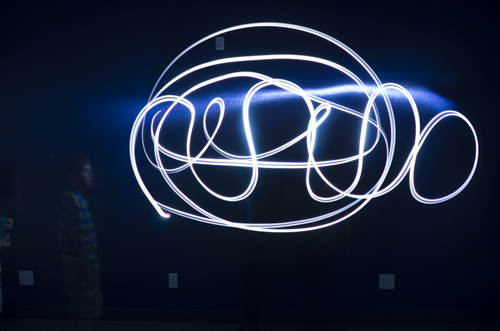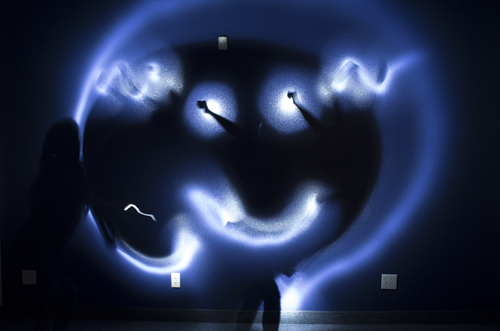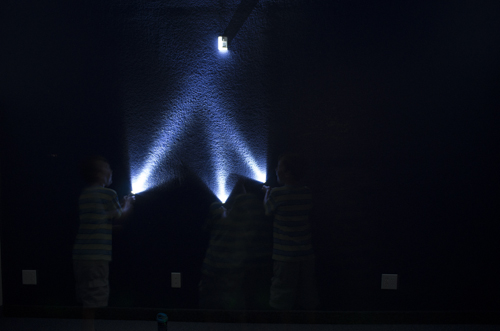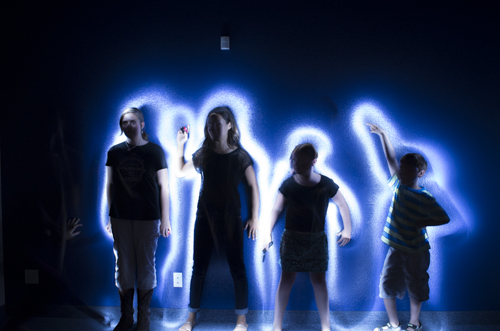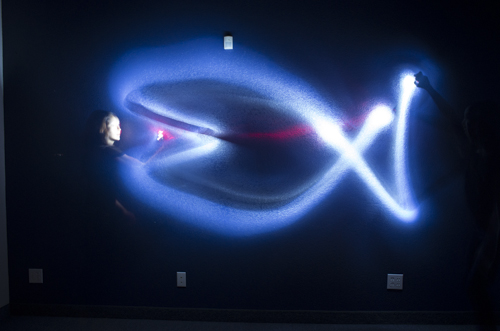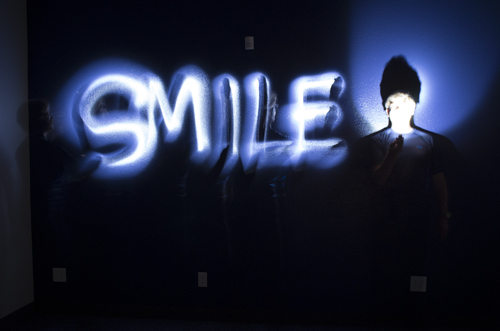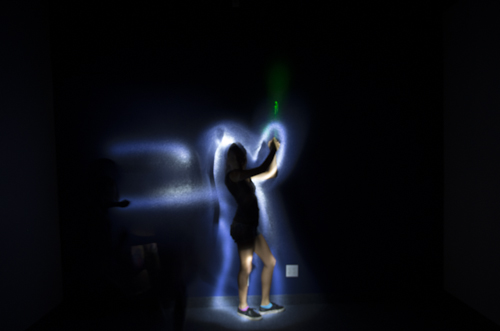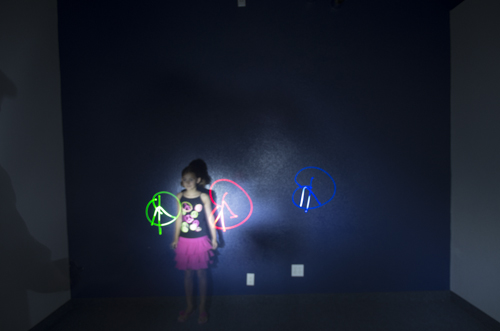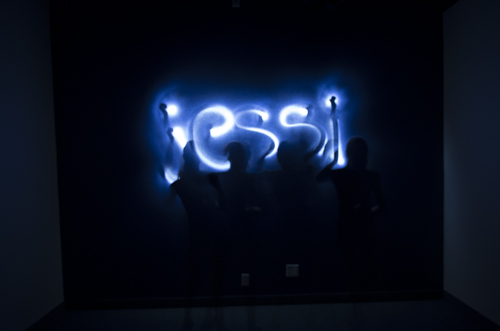All Art Arizona Opening Reception – 31 May 2014
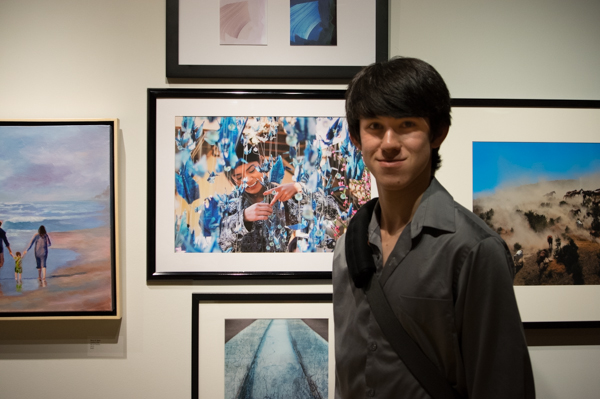

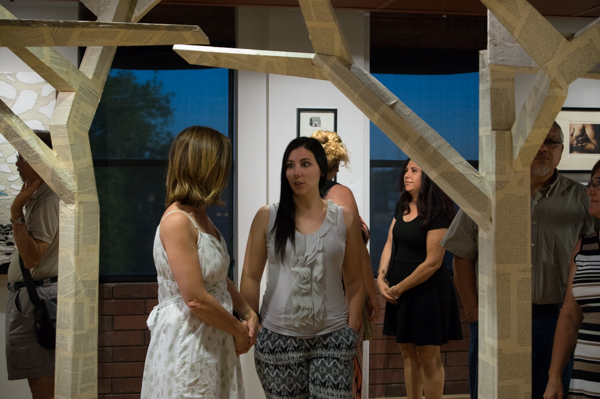
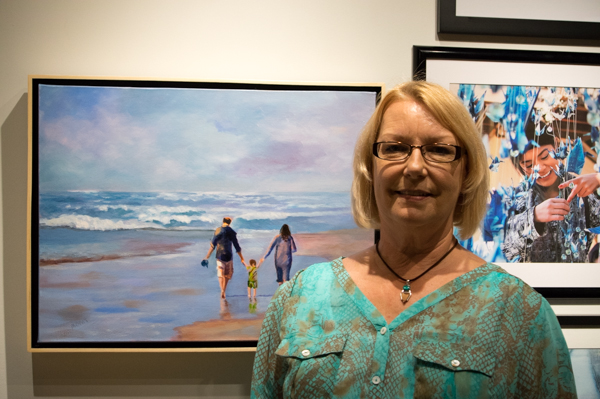
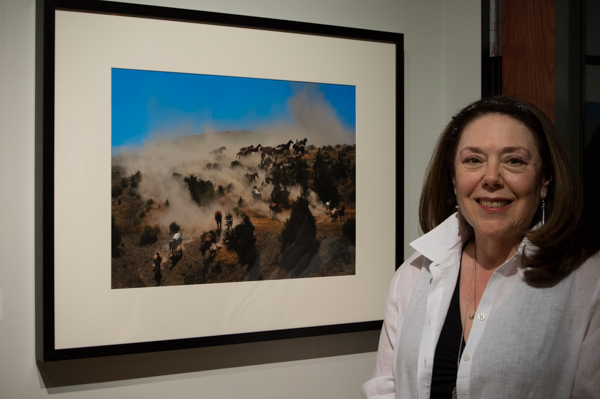
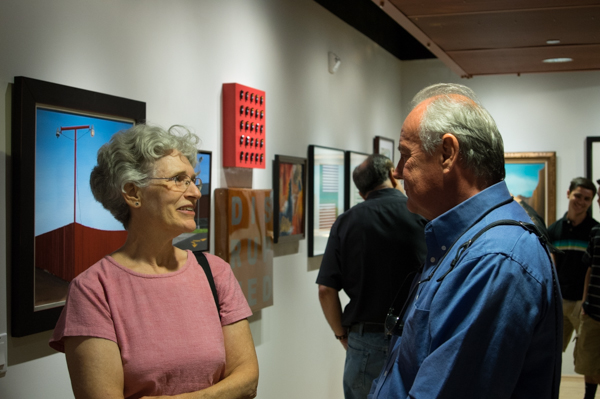
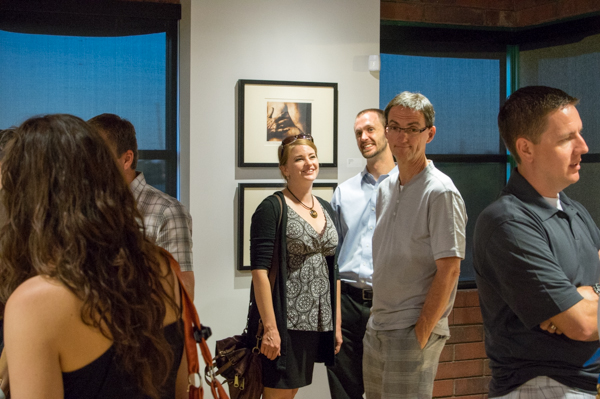
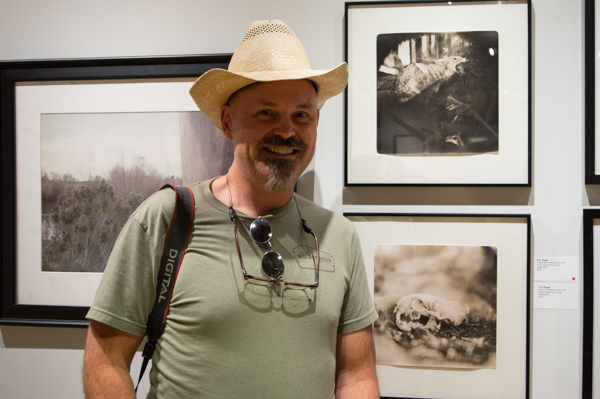
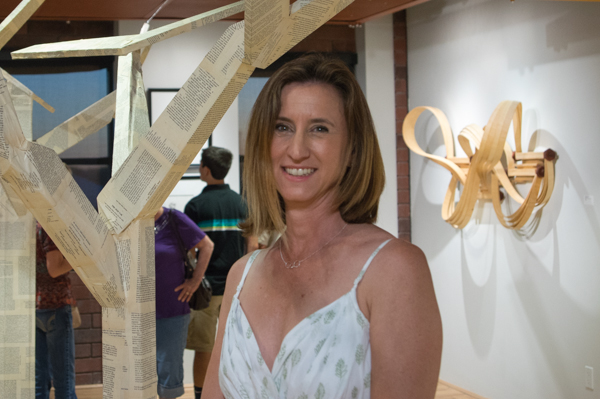
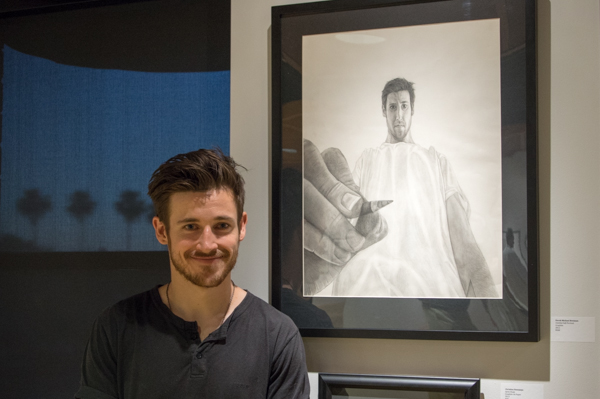

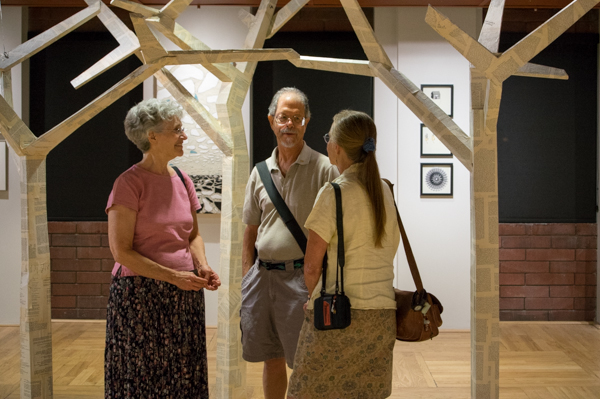












Starting Friday evening and working through Sunday, the workshop students learned about creating digital negatives for platinum/palladium, chemistry, and then made prints in the alt process lab.

Keith shared his expertise with the class and showed the process he uses to make palladium and platinum prints. You may remember Keith’s work on exhibit in the North Gallery along with Dick Arentz this past January and February during the Art Intersection Platinum/Palladium exhibition.
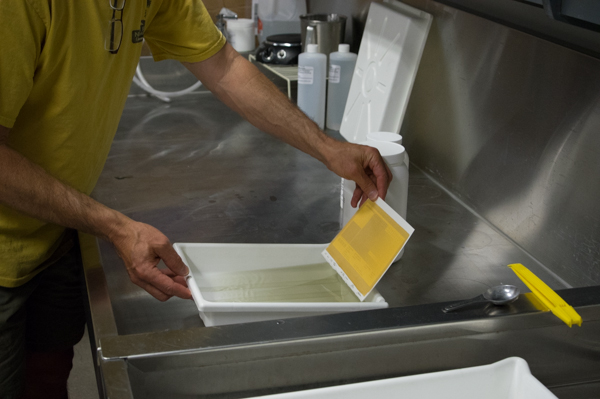
Checking the first digital negatives for densities and checking exposure times.

Keith concentrating on building and explaining digital negatives and Quad Tone RIP.
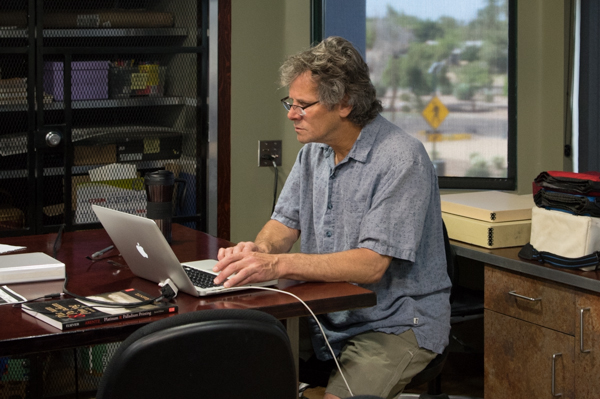
Discussing paper choices.
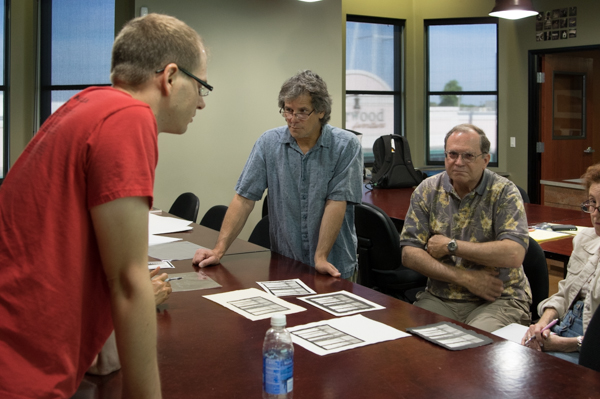
Ready to print.
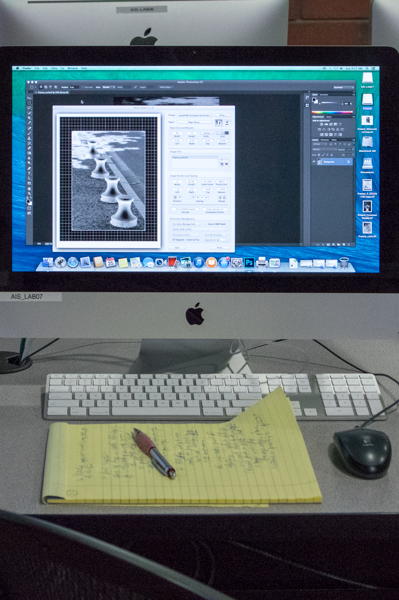
Coating Arches Platine with a glass rod.

Time to expose.
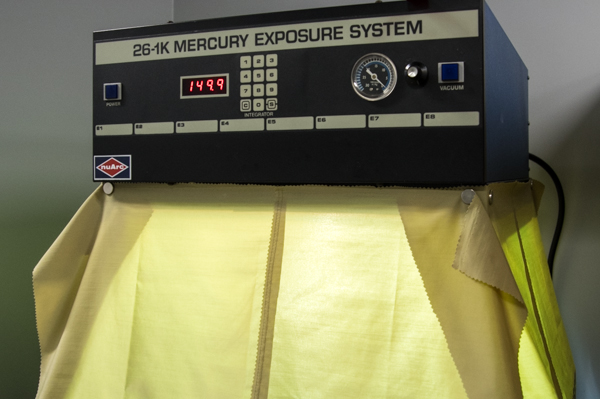
High tech or low tech, it’s all about UV light.
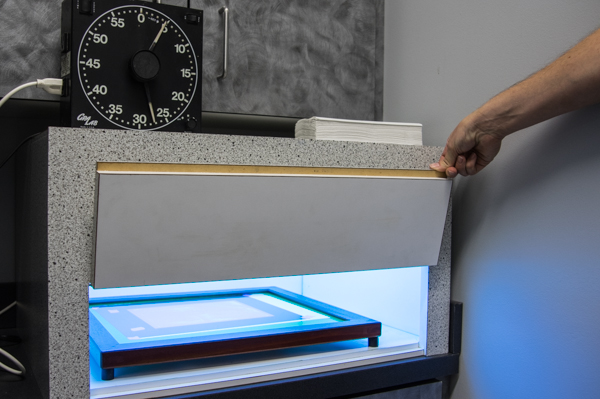
Pouring on the developer.
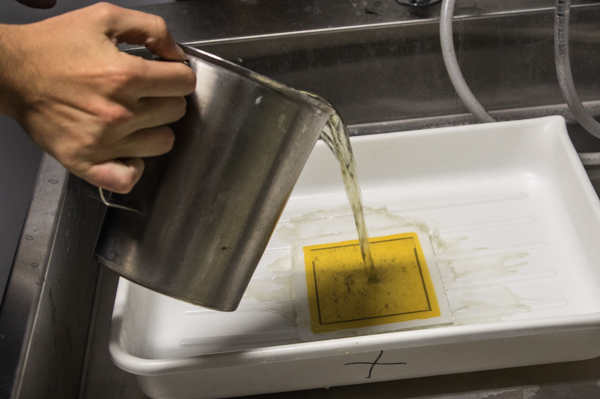
Trying the cold tone developer.
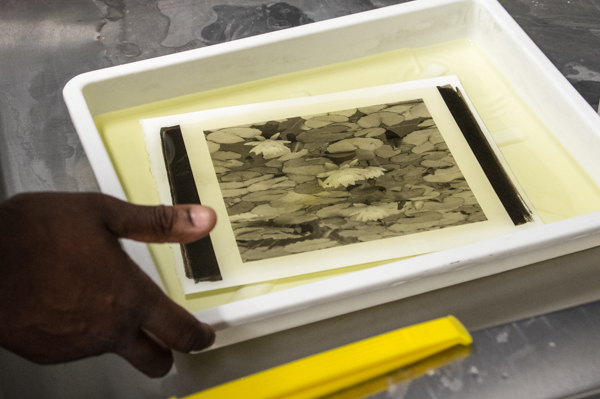
Clearing.

In the final wash.
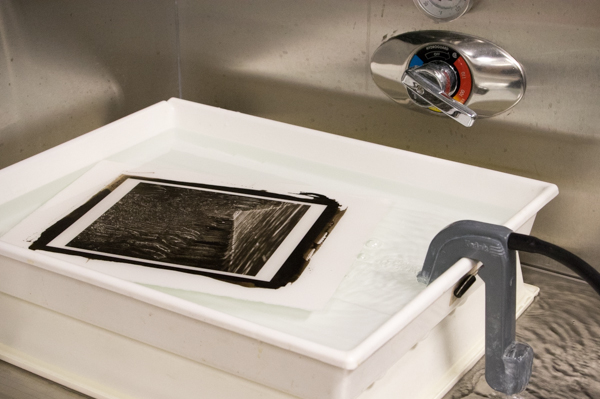
Final prints drying before going to the critique wall.
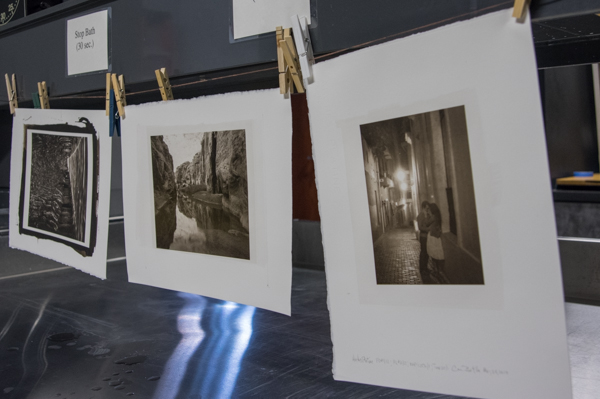
Some of the dry prints on the critique wall. Others were still too wet to show by the end of the workshop.

Beautiful and creative images were made this weekend using hand coated printing out paper. Friday night Siegfried gave a lecture, followed by two days of making prints using Printing Out Paper.
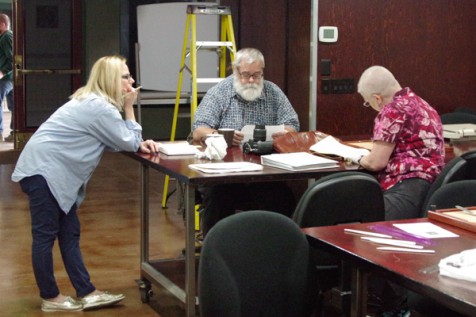


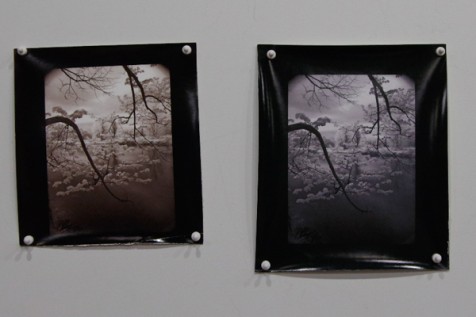

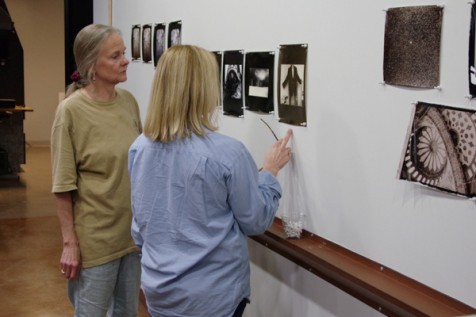
The day of PhotoTapas celebrating the art of photography. The schedule included lectures and demos about digital negatives, platinum printing, printing out paper, conservation of prints, and a fun time with instant film and a pinhole camera. In the late afternoon, we served tapas and sangria (punch), and enjoyed a print sharing event in our new gallery space. Dick Arentz led a gallery talk through the Eternal Platinum exhibition in the North and South galleries.
Two weeks after the Digital Infrared Workshop I’m still playing with the infrared camera and filter taking pictures during PhotoTapas. Keith Schreiber is explaining his process and work.
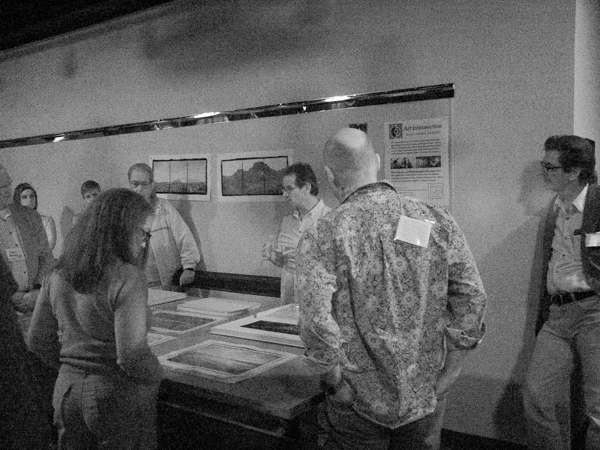
Jim took portraits of the group using his homemade pinhole camera and Fuji 3000B instant film.
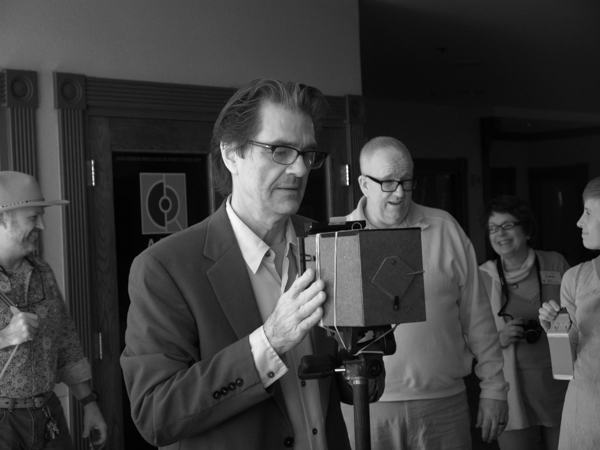
Because of the moving clouds, Jim kept asking the universe for consistent light.
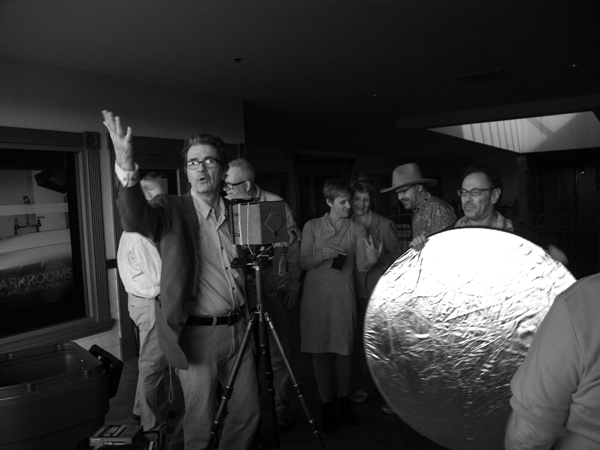
Looking at Keith Schreiber’s platinum/palladium images. Later Keith gave two printing demonstrations in the darkroom.
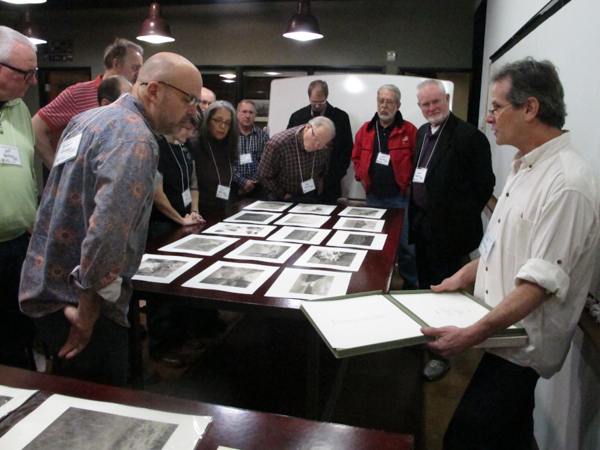
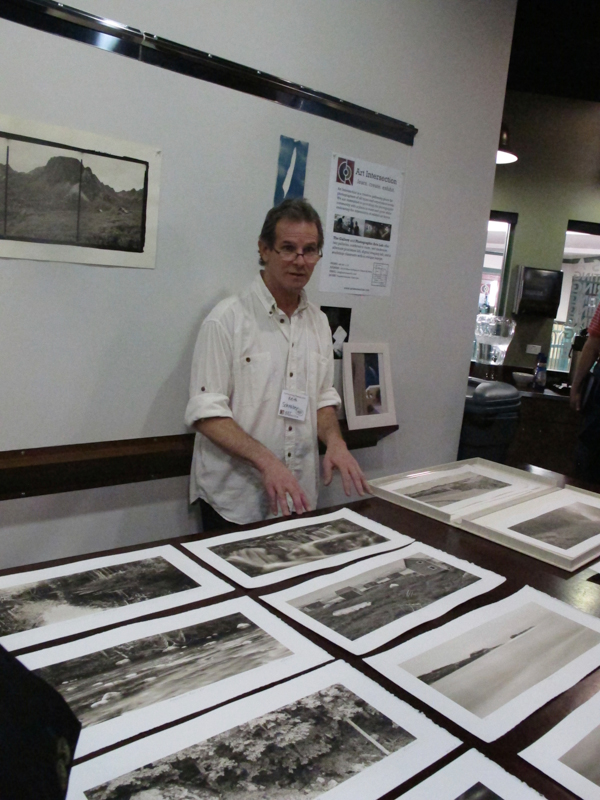
Jennifer Gutierrez, the conservator from the Center for Creative Photography, gave a presentation on her conservation work and offered advise for the audience about how to house our work.
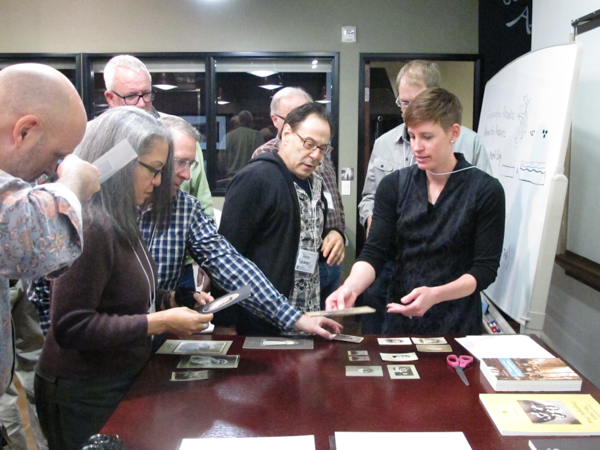
Becky Senf, Randy Efros, and David Emitt Adams enjoyed the day.
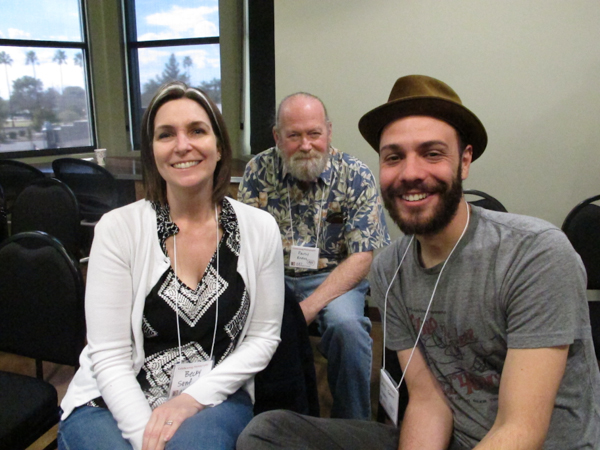
Gina’s pinhole portrait.
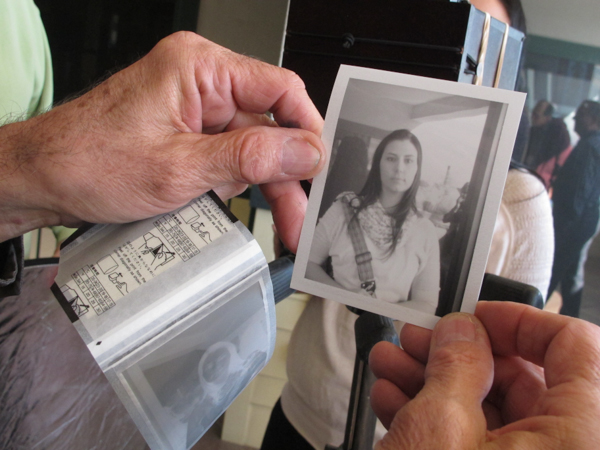
Becky’s pinhole portrait.
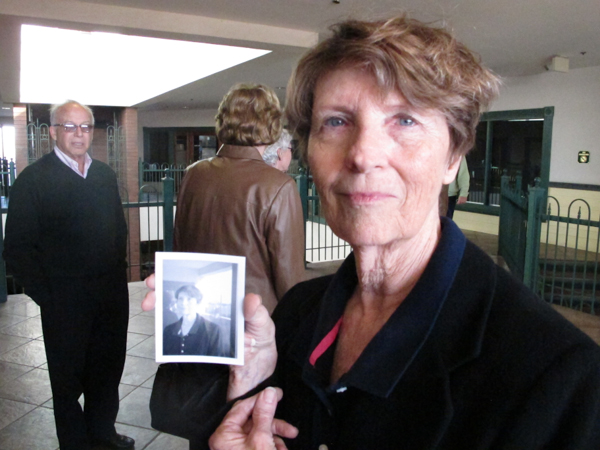
At four-o’clock tapas was served. Small bites in a convivial setting.

Dick Arentz with Keith Schreiber. They are long time friends and platinum printers with images in the Eternal Platinum exhibition.
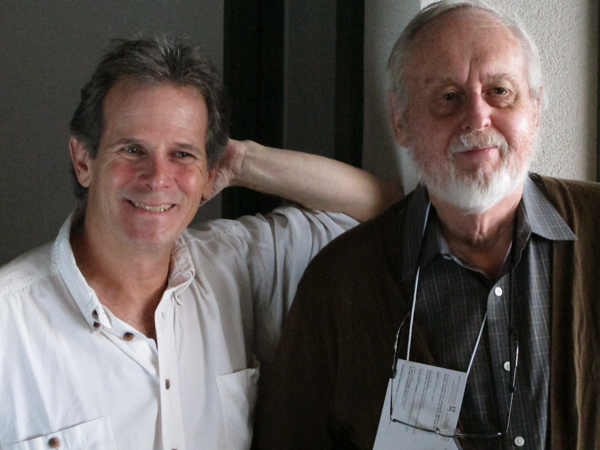
The contingent from the Center for Creative Photography.
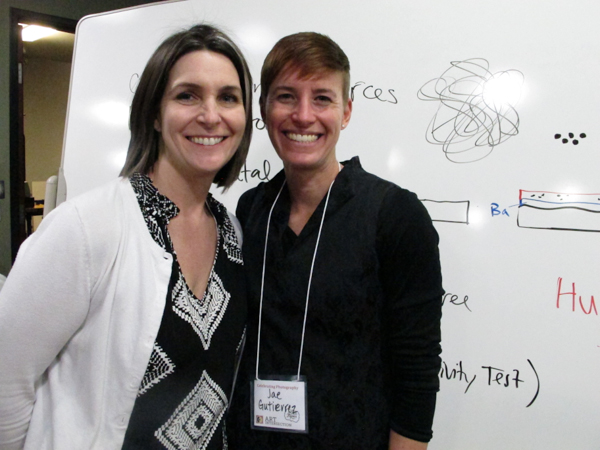
Print sharing in Gallery 4.

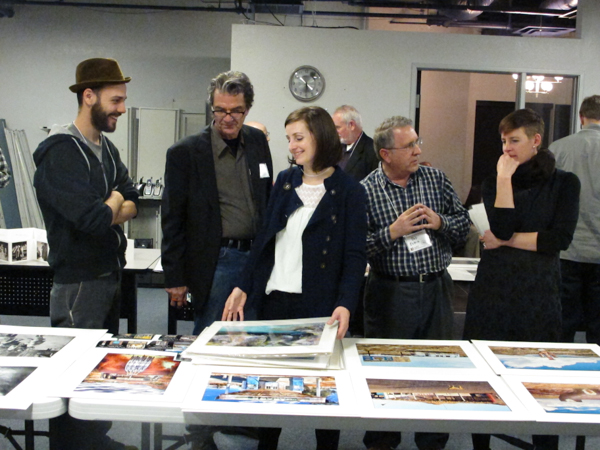
Great cake for the 3rd anniversary of Art Intersection. Thanks Debra and Jamie.
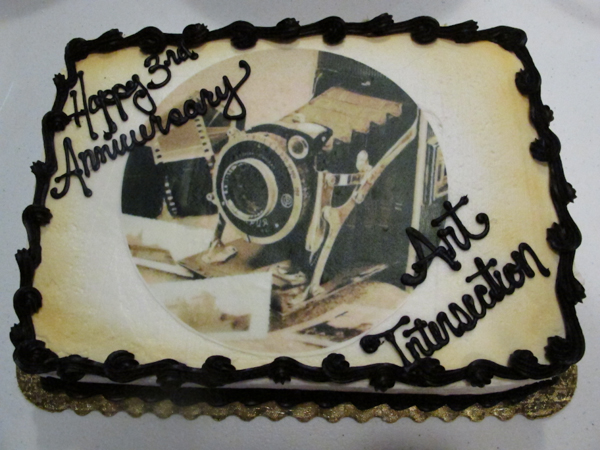
One of the truly significant changes digital photography has brought us is the simplicity of shooting infrared (IR). Old School analog IR shooters had a series of steps that required best guesses to be made and correspondingly has a rather high hit or miss result. First of all, you had to be careful loading the camera since the film could fog in bright outdoor conditions. Then, focus and exposure issues had to be addressed.
The Infrared weekend kicked off on Friday evening with a free lecture by Neil Miller and Siegfried Rempel, shooting started at the Gilbert Riparian on Saturday morning, followed by process in the Digital Lab in the afternoon. Sunday we printed images and reviewed the work on the Crit Wall.
Siegfried printed an image from a digital negative on to hand coated printing out paper, and demonstrated digital infrared capture, to digital negative, to an alternative photographic process. This could have also been printed using cyanotype, platinum, gum bichromate, etc.
Here is a link to the original workshop information.
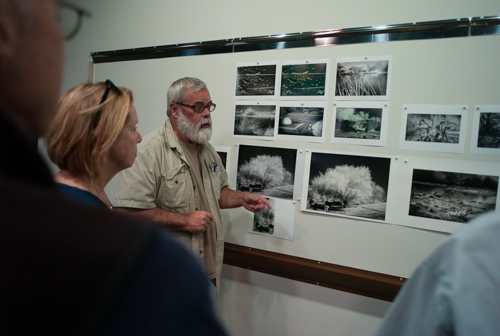

So what is the visual difference with infrared? The primary difference is that the camera is photographing in response to living plants in an area of the light spectrum the human eye cannot see. Plants will often reflect greater proportions of infra-red and appear to be lighter in value. The sky, devoid of reflected infra-red will appear a dark value similar to the effect of shooting black and white film through a dark red filter. Clouds tend to show greater modulation and gradation and often “pop” in the image.
The following infrared images are by Margaret Wright
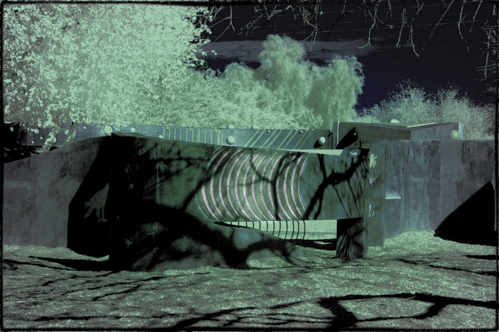
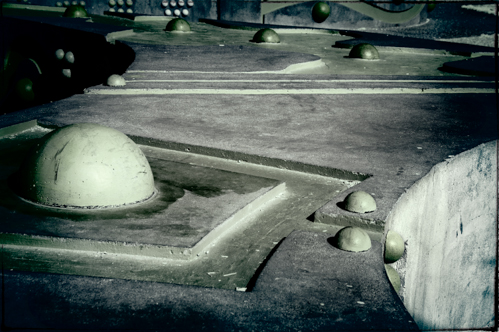

The following infrared images are by Richard Fee
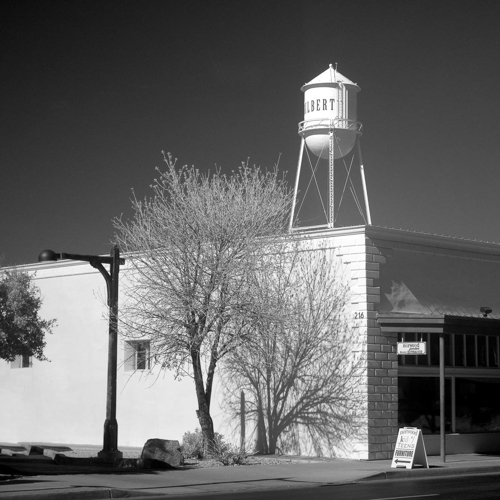
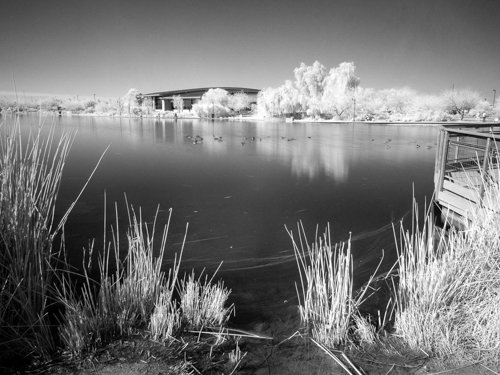
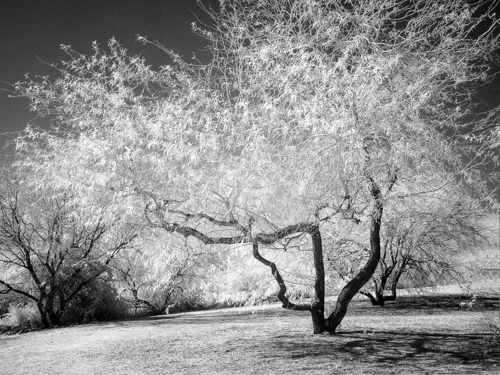
The following infrared images are by Neil Miller, and the featured image for this post is by Neil Miller
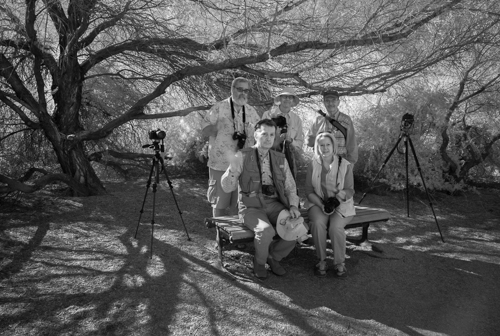
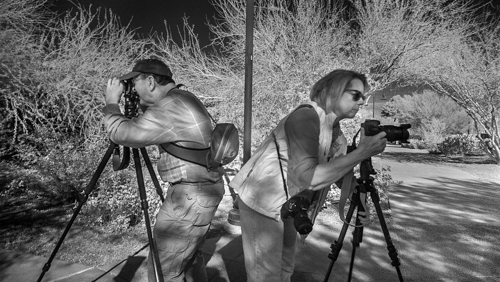

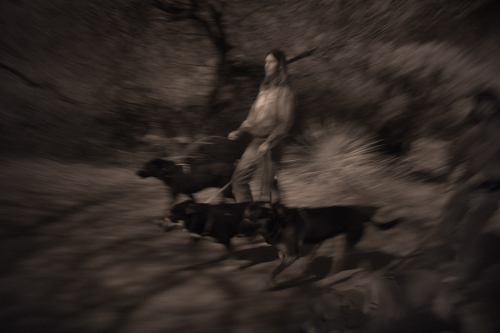
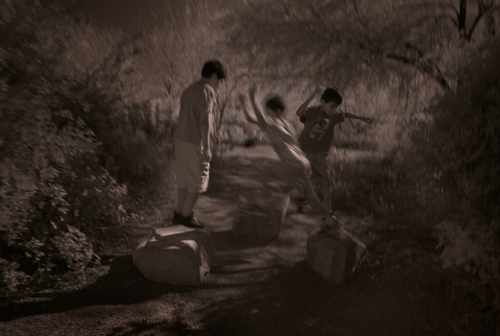
The opening of Eternal Platinum marks Art Intersection’s third anniversary. Our first exhibition on January 17, 2011 was Out of the Blue: Contemporary Cyanotype Invitational. Once again we went to a traditional process that offers a unique, and distinctive presentation of an image. On exhibition in the North and South Galleries are exquisite works from artists that have not been shown before at Art Intersection.
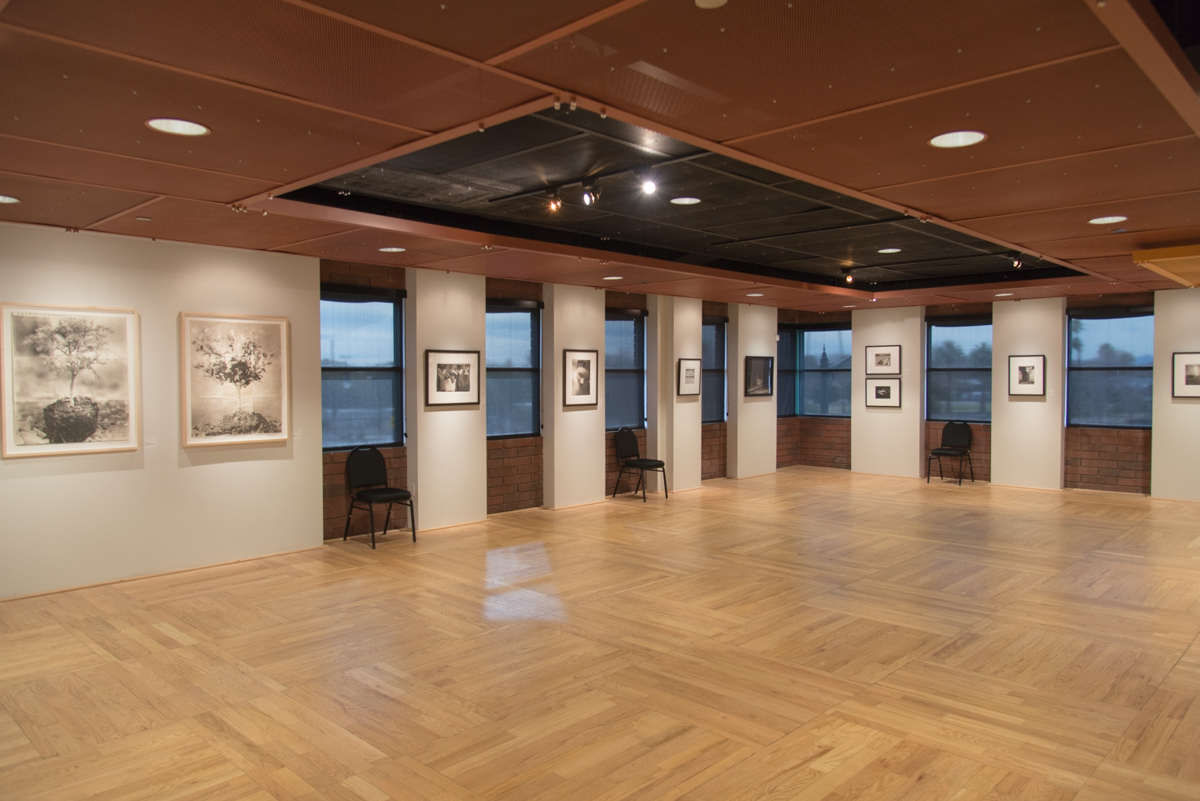
A platinum print is an exceptionally beautiful and everlasting image presented through a wide range of subtle tones. The creation of a contemporary platinum print, whether from film or digital camera, remains an intimate, handcrafted process. The artist begins by hand coating an art paper with a platinum or platinum/palladium solution, exposing the sensitized paper to ultra-violet light, and then hand processing the exposed paper to create the final, permanent print. No two prints are ever identical.
This exhibition is in conjunction with PhotoTapas, celebrating the art of photography in Arizona during the month of February.
EXHIBITING ARTISTS
RYAN GALLERY
This year begins an expansion of our gallery program to include the representation of artists who will be shown in Ryan Gallery. The East Gallery has been renamed the Ryan Gallery and will serve as the space for presentation of works by the represented artists. During Eternal Platinum in the Ryan Gallery, with platinum prints, are the following artists:
In the future we will show the works of additional represented artists with prints produced in the darkroom using processes including cyanotype, gelatin silver, kallitype, etc.
IMAGES FROM THE OPENING
Below are the incredibly nice parents of Charles Grogg, standing in front of one of four images by Charles.
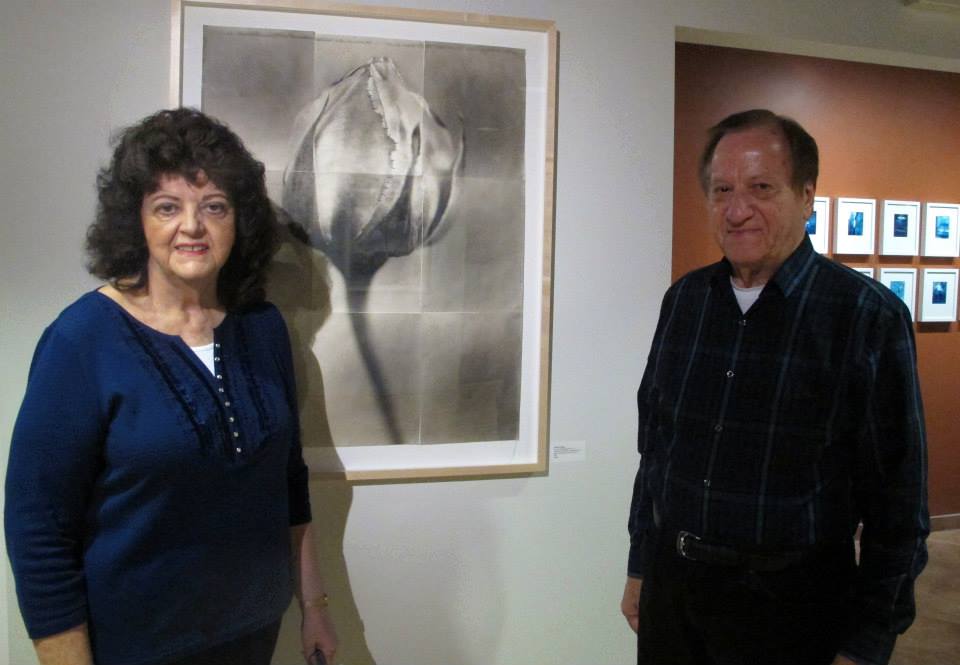
Jim and Carol standing in front of work by Dick Arentz. Carol worked through much of last year to curate this show. She worked directly with the artists, as well as two Arizona galleries to bring this work to Art Intersection. Thank you Carol for a great job. Also, thank you to Tilt Gallery and Etherton Gallery for making this work available to Art Intersection.
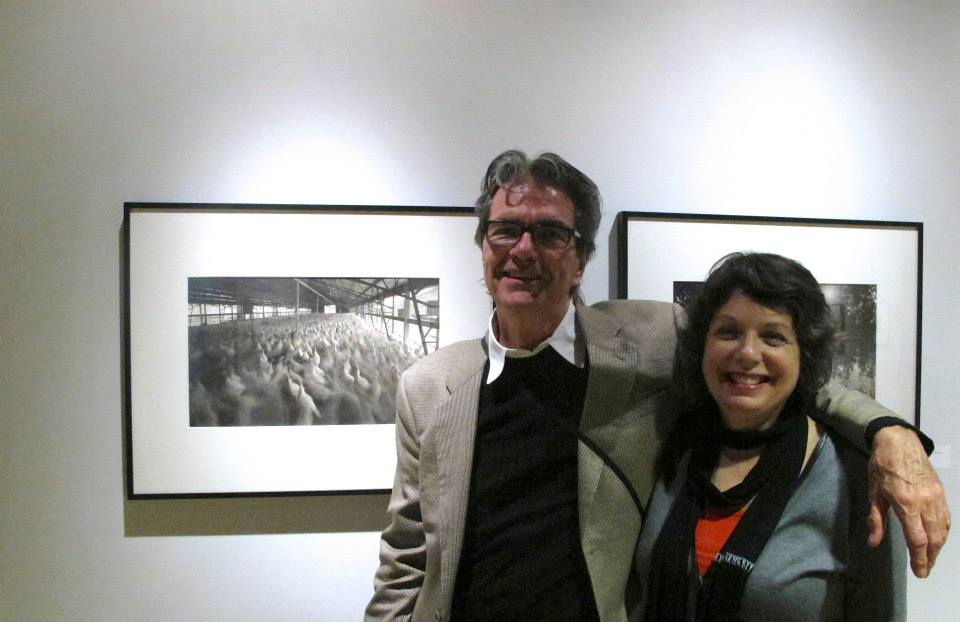
Two close friends of Art Intersection, David Emitt Adams and Rosie Shipley. Rosie will be the juror for our upcoming student photography exhibition, Emerge. Thank you Rosie. David was the juror for last year’s Emerge exhibition.
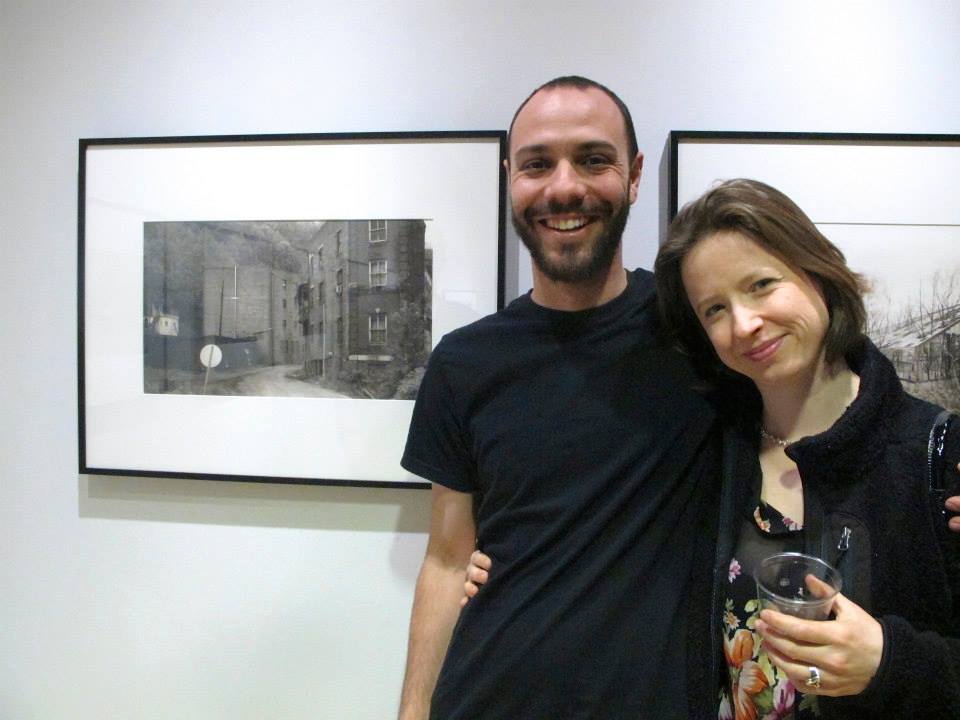
Randy Efros, well know photographer and arts patron joined us. One of his images hangs permanently at Art Intersection.
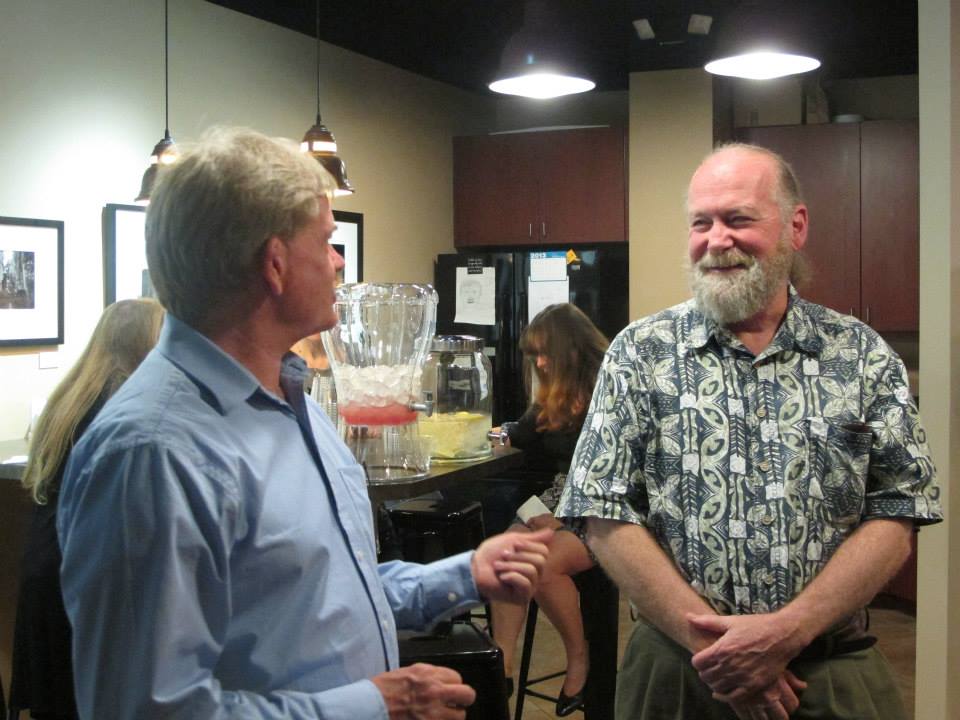
Mark and Becky Godfrey and Chris Palmer and Tammy Cowden never miss an opening. Mark’s company Parker Madison is the marketing firm for Art Intersection. Both Chris and Tammy have had their work on exhibition at Art Intersection in the past.
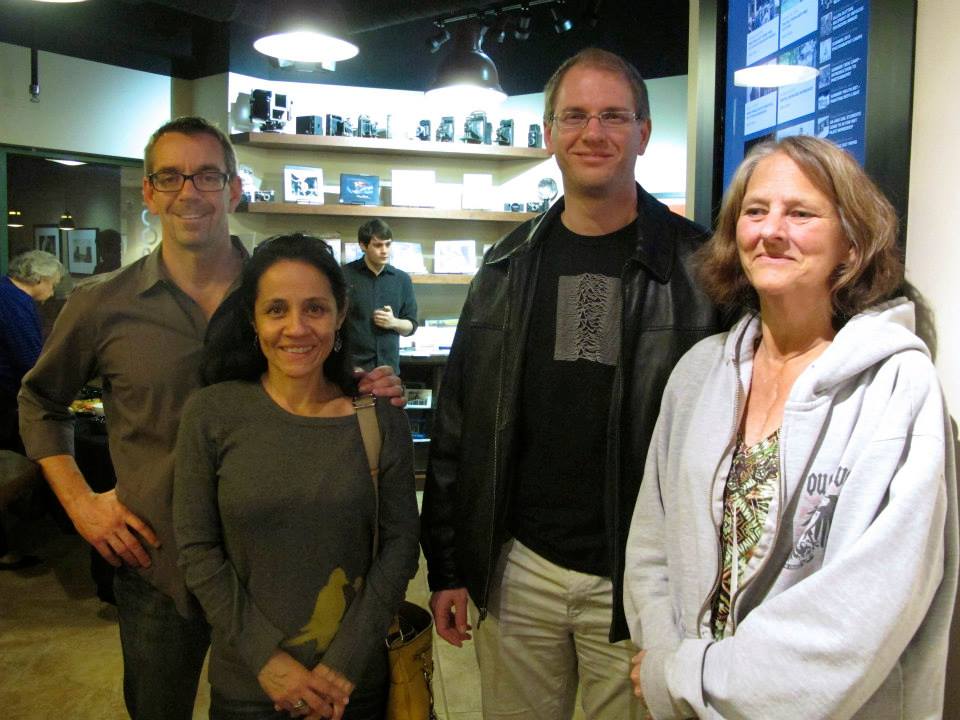
Jamie Fitzgerald, Debra Wilson, and Alan Fitzgerald in the Ryan Gallery. Debra works behind the scene at Art Intersection making sure the bills are paid and the business pieces stay organized. Jamie practices acupuncture nearby at The Healing Point. Alan, well we’re not sure what he does, but he drinks most of the coffee.

James Hajicek and Mary Kay Zeeb discussing the platinum process. Jim taught the non-silver curriculum at ASU, and was a professor there for over 30 years. Mary Kay teaches, and is an instructor for the Italy Workshop.
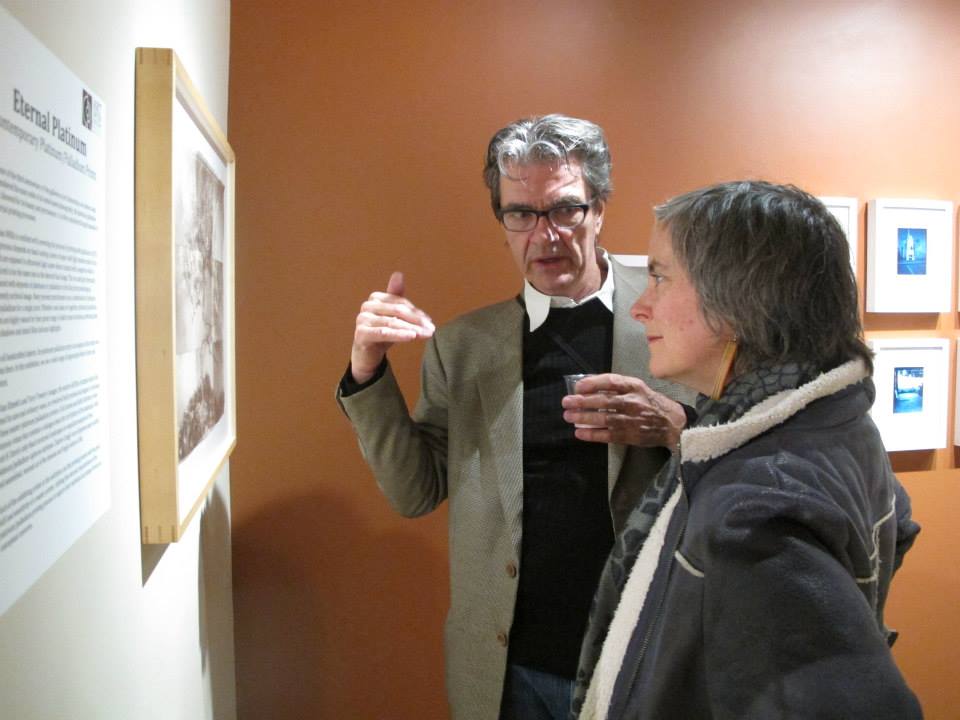
Neil Miller and Marilyn Miller never miss an opening or event at Art Intersection. As always Neil has his camera around his neck, but tonight it’s different, he is shooting with an infra-red flash and filter. He will co-instruct the upcoming infra-red workshop.
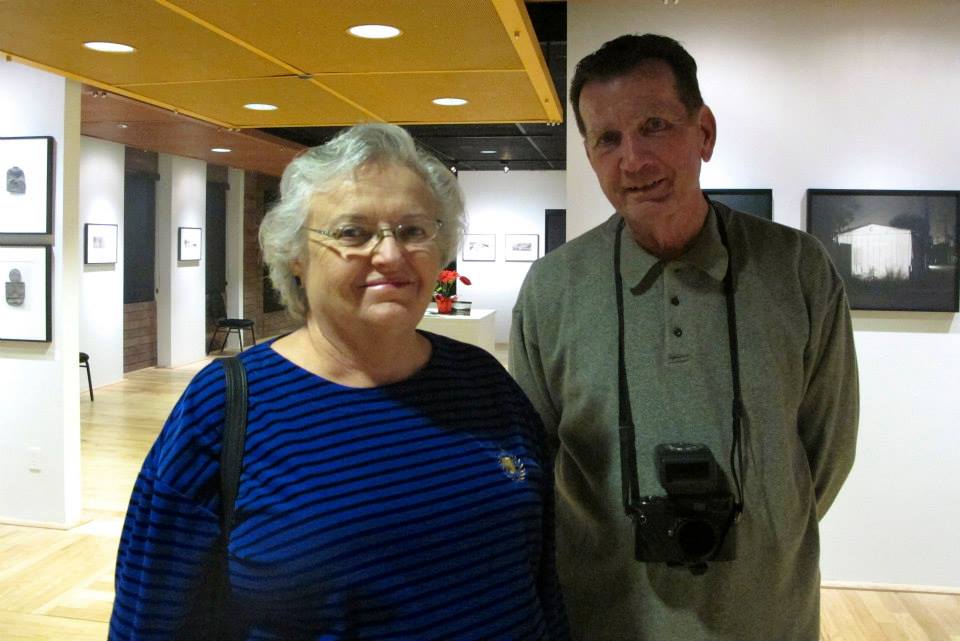
North Gallery with Dick Arentz and Keith Schreiber.
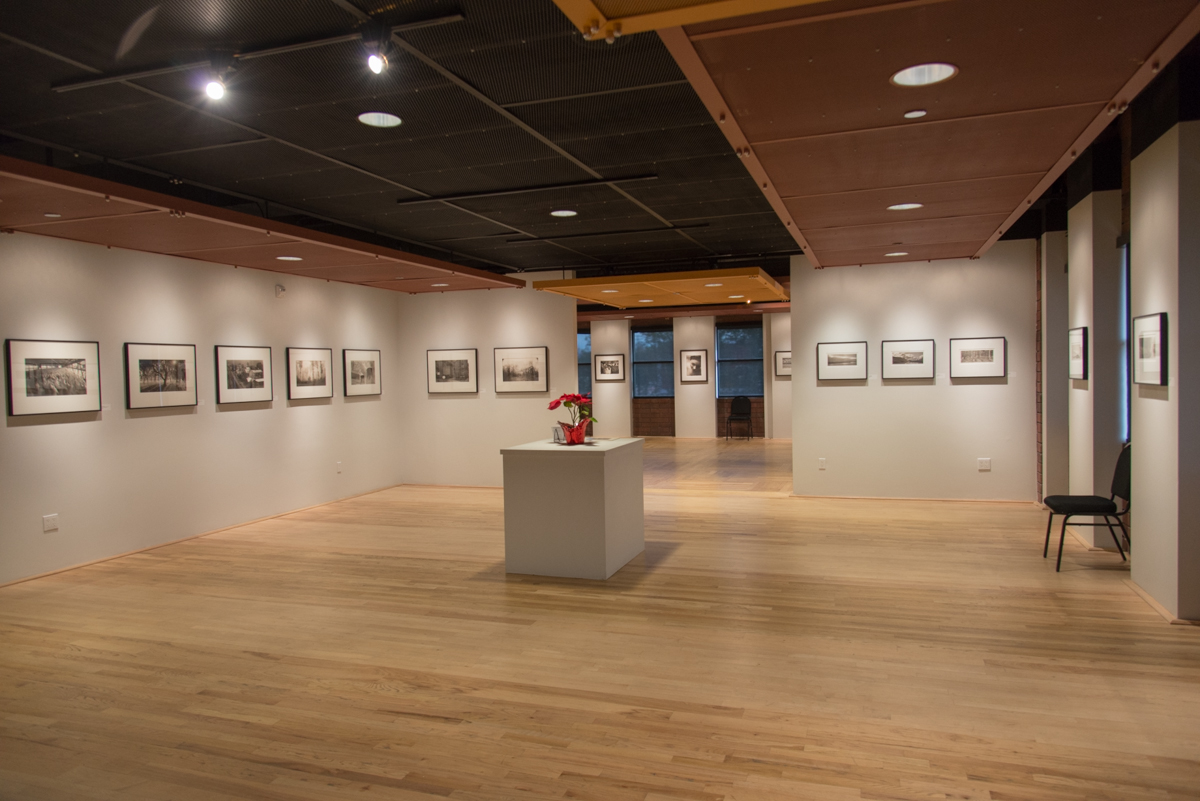
South Gallery with Scott B. Davis, Charles Grogg, David Johndrow, Stan Klemick, Andrea Modica, and Jean-Claude Mougin.
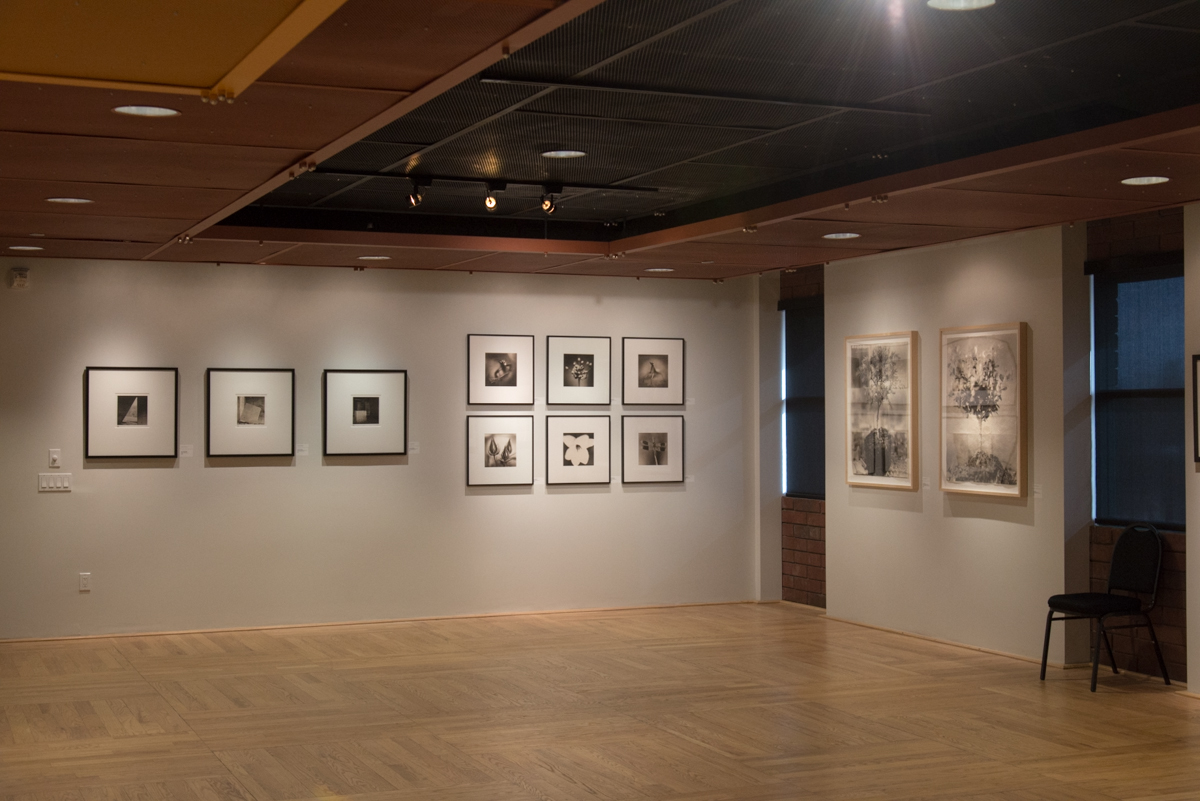

Ryan Gallery with Michael T. Puff, Ryuijie, and Terry Towery.
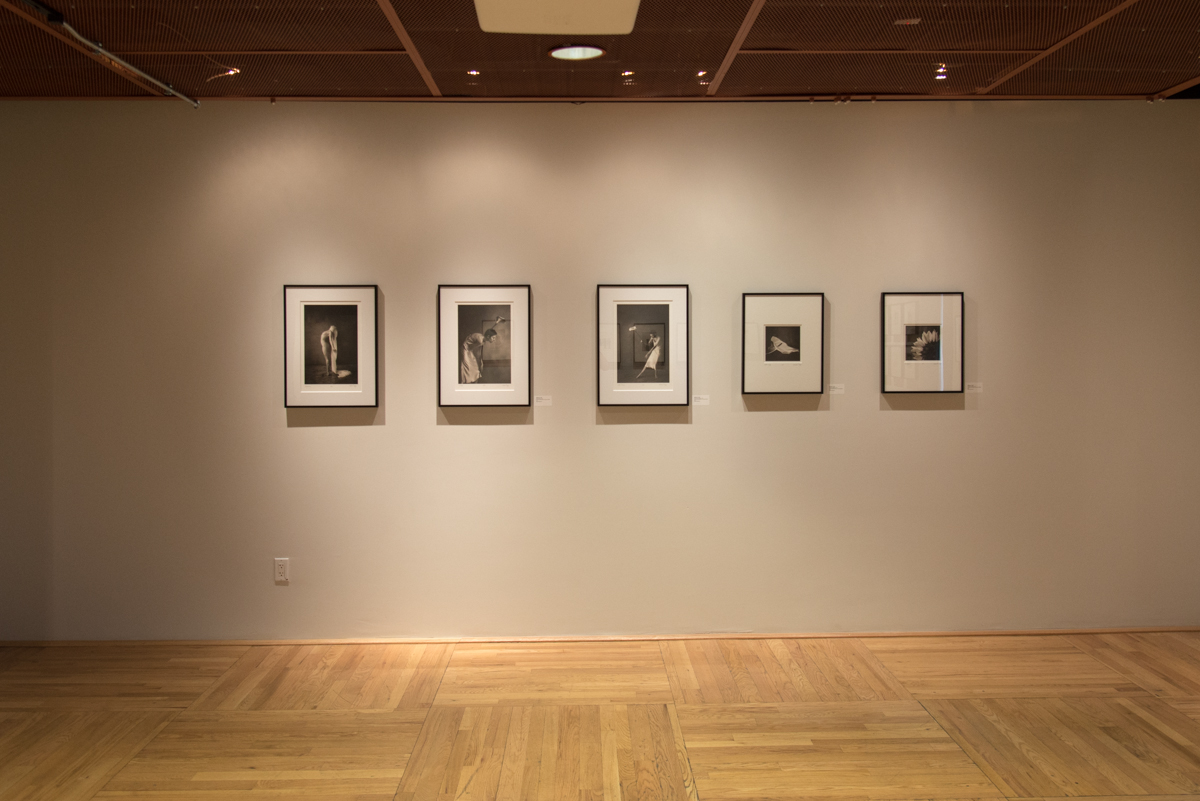
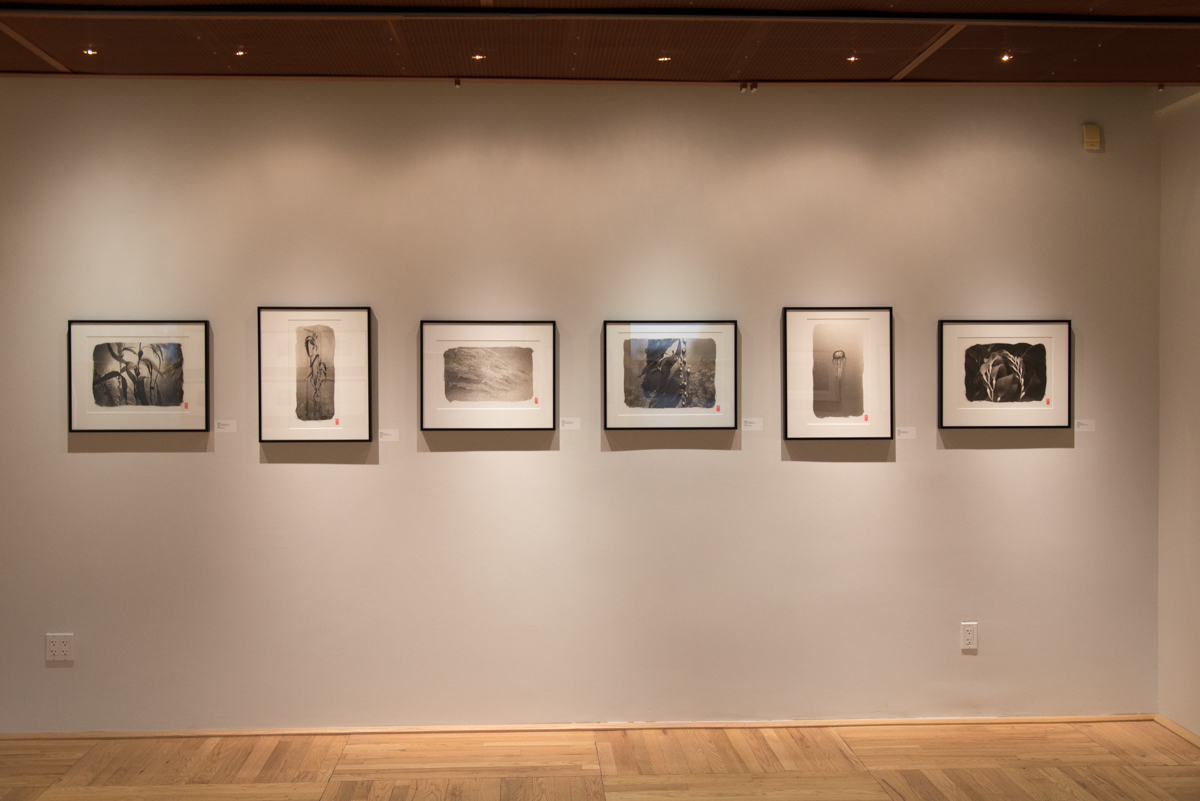
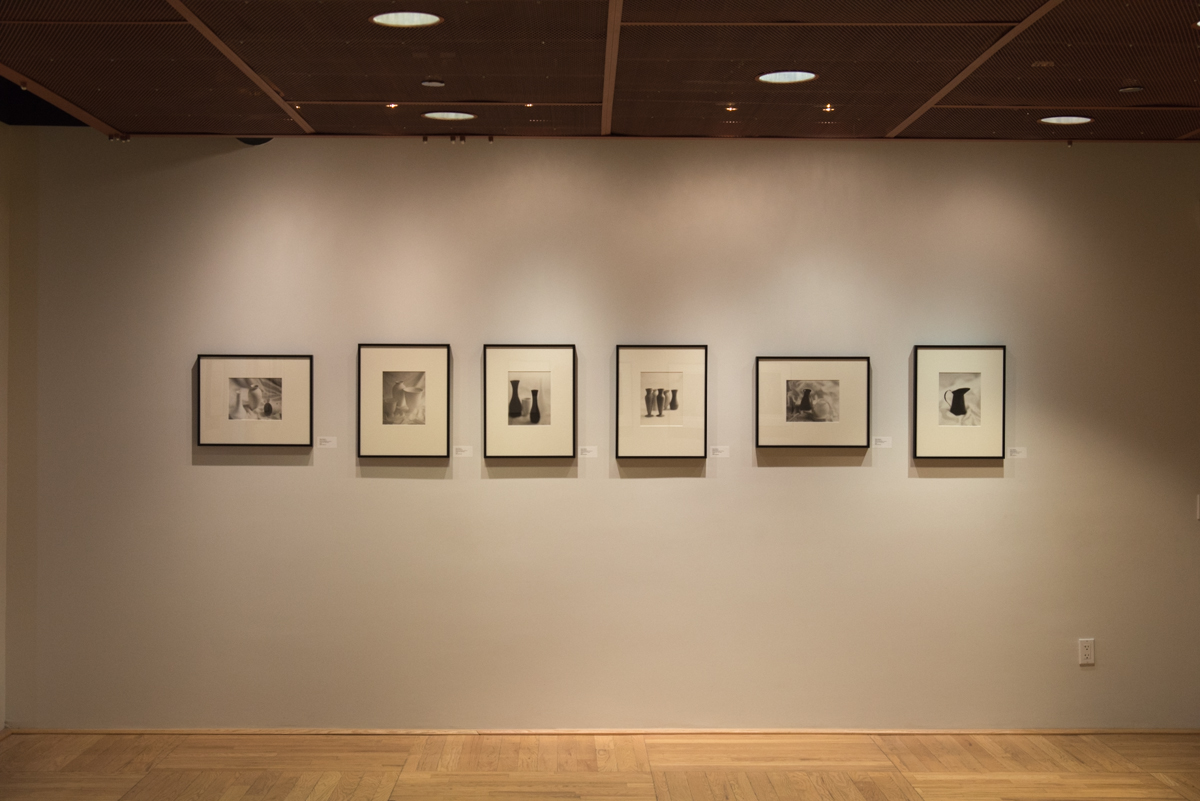

A group of South Mountain High School intermediate and advanced students, along with their teachers, Vivian Spiegelman and Dena Cervantes, came to Art Intersection to participate in a three-session workshop experience. In the workshop the students looked at and discussed contemporary portraiture, learned to use a 4 x 5 camera, created digital negatives from digital files and print them in the Van Dyke 19th century printing process.
They produced some beautiful self-portraits and went back to school with a deeper understanding of the art of photography.
If you, your institution, or group are interested in learning more about how we can customize a photographic experience for you contact us.


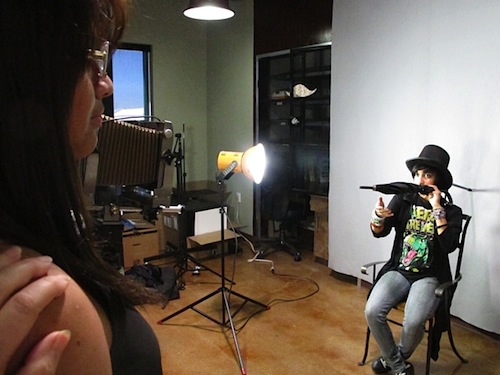
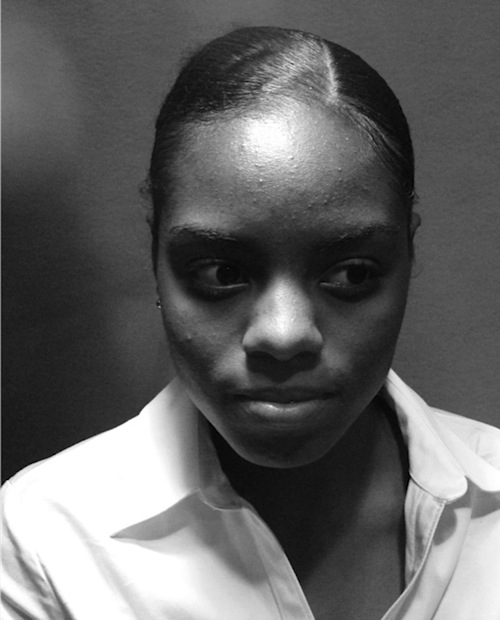
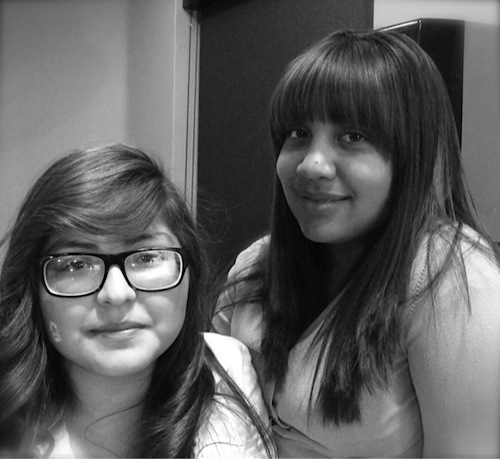
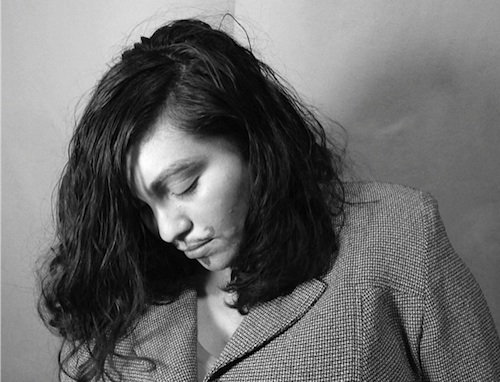
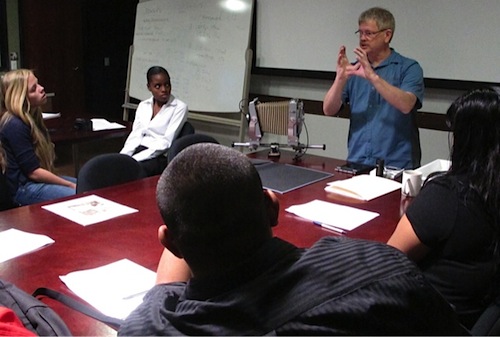
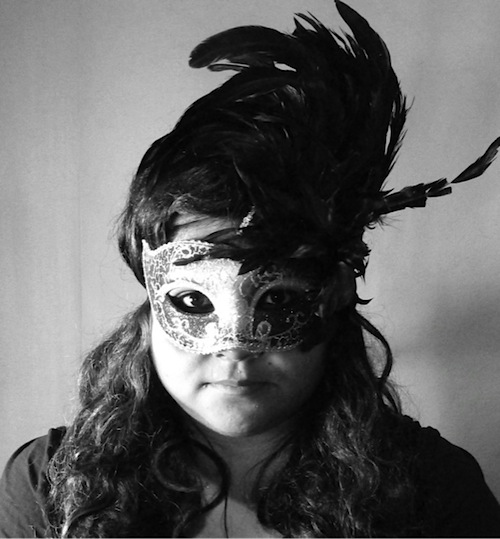
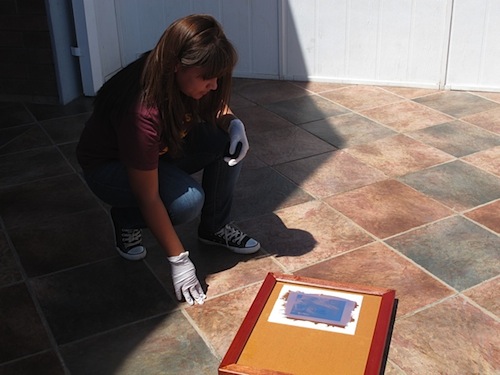
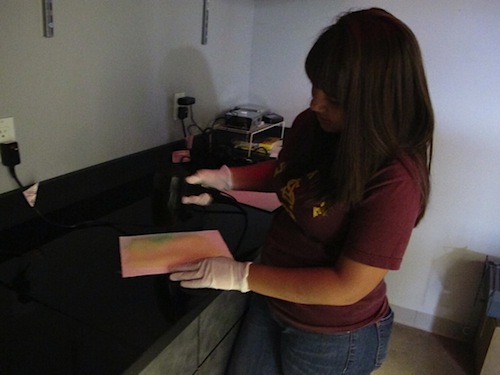


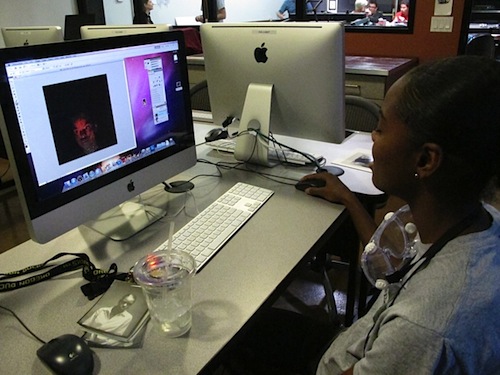
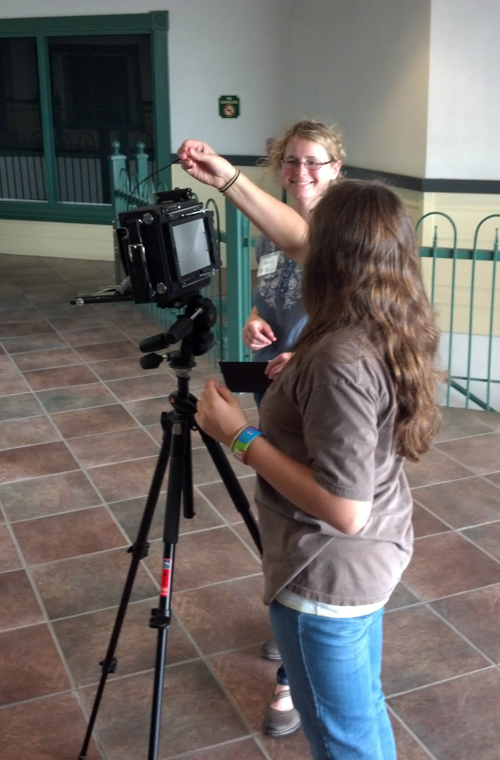
This summer at Art Intersection we focused on bringing the spectrum of photography and art to Arizona kids and teens with our summer art program! We were pleasantly surprised at the greater Phoenix area youth turning out for our camps, especially with many of our teens coming from Tucson, North Phoenix, Tempe, Chandler, Mesa, and beyond!
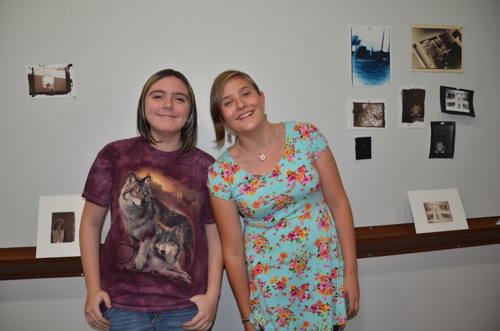
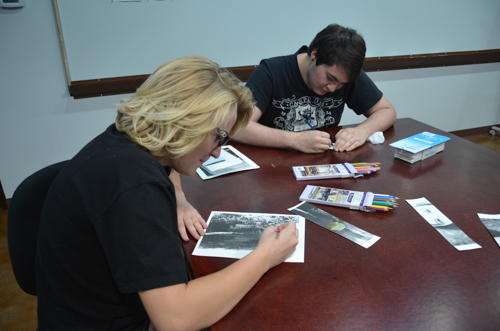
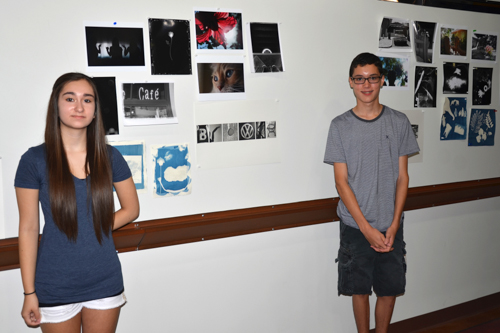
Kids from ages 9-14 came out every Tuesday afternoon for mixed media, drawing, photography, and bookmaking. Art Intersection staff members taught students many new techniques to implement into their art-making and each week kids went home with finished pieces of work.
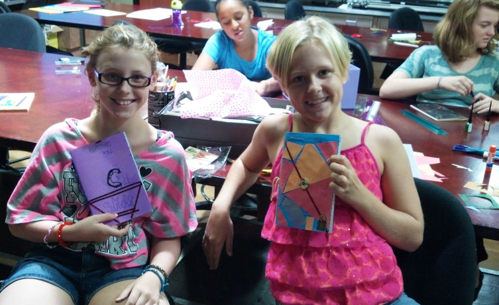
Our teens did an amazing job learning a lot about all forms of photography in our Introduction to Photography camp. More 14-17 year-olds further developed either their digital or darkroom skills in the Advanced Digital Photography and Advanced Darkroom Photography camps.
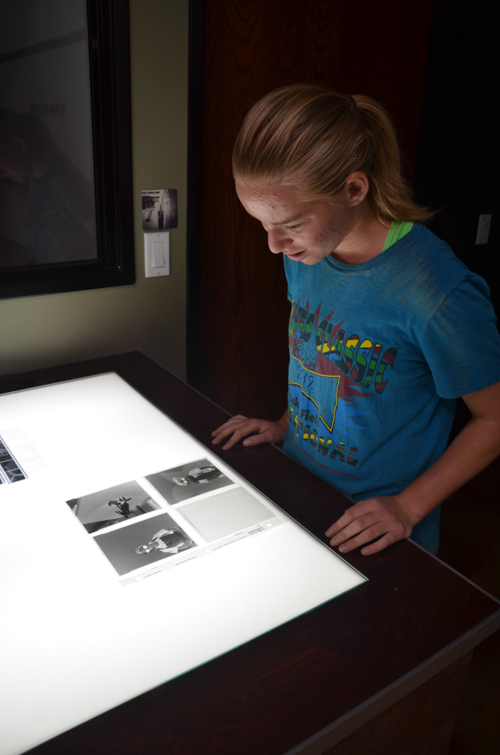
The quality of work and the amount each student accomplished during the one-week sessions was amazing! In the intro camp, students focused on the basics of photography and learned digital, darkroom, and alternative processes. In advanced digital, we moved on to outputting our images and making large prints, in addition to handmade books, and stop-motion animations. Teens in Advanced Darkroom heightened their darkroom printing skills, while also learning 4×5 view camera, toning, hand-coloring, and Van Dyke alternative processing. To look at an online gallery of work made by our teens this summer, please visit:

Thanks to our awesome students and replica Watch parents for making our 2013 summer programming a huge success and we can’t wait to make art with you again next year!
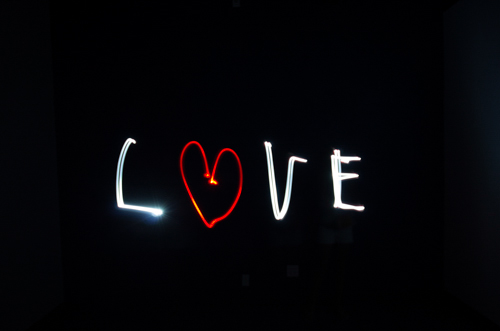


Over five days in June this class explored photography from 19th century cyanotype, to 20th century black and white film, to 21st century digital imaging. They covered three centuries of photographic technology in only five days with each student taking home a collection of their work consisting of cyanotype, gelatin-silver, and digital prints. Below, the class group poses for a fun portrait. During the week long camp, each student demonstrated their passion for photography. Here are some examples and there will be additional work in an online gallery coming at the end of the summer youth classes – stay tuned!
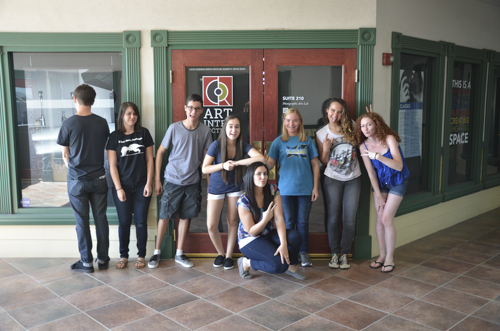
Each student was given a 35mm film camera, a roll of 35mm black and white film, and an assignment. They developed the exposed film in the darkroom using traditional black and white chemistry, and then printed in the darkroom using an enlarger and traditional darkroom processes. Film is very much alive and well, and still capable of making wonderful images as seen by these students’ work.
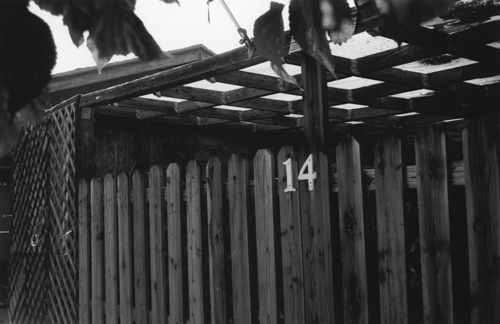
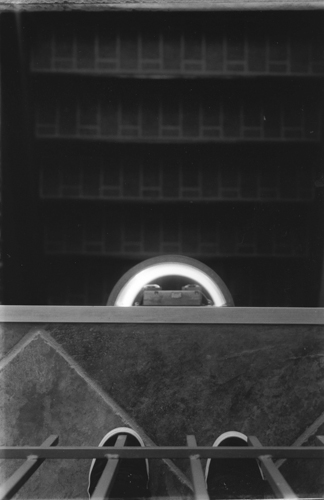
All the week’s work goes on display for review using the magnetic critique wall in the photo arts lab.
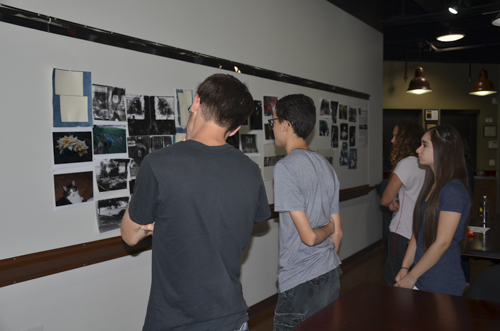
Now we are in the 21st century with this digital image.
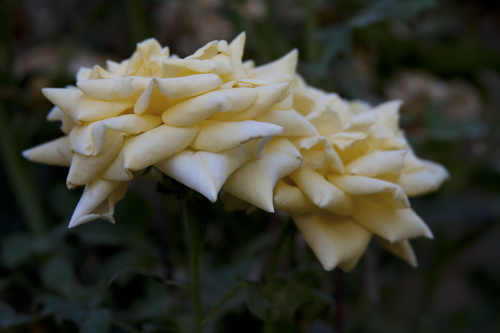
Cyanotype printing requires the paper to be coated and dried before exposure in the sun.
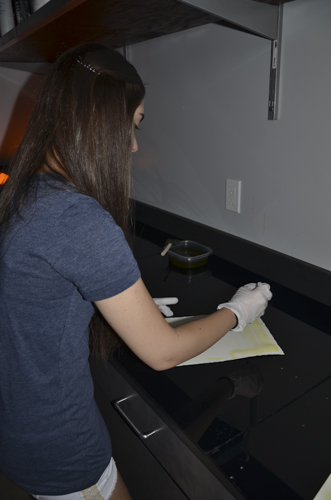
Contact printing frames hold the coated paper and objects during sun exposure to create cyanotype pictograms. This easy and simple process can be done at home too; the fun doesn’t need to end.
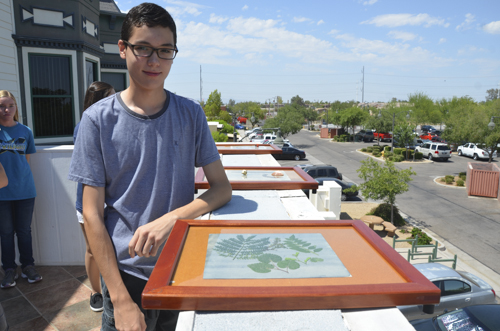
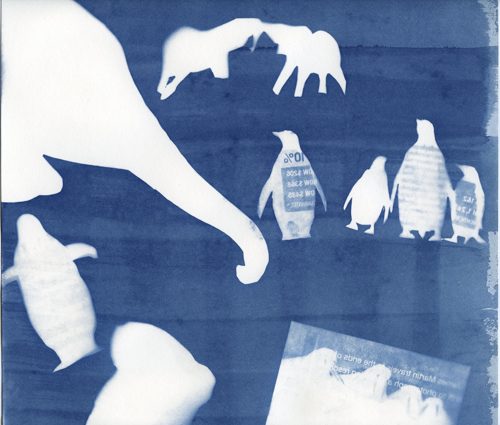
Like the cyanotype printing, a piece of black and white printing paper can be used to make a pictogram in the darkroom, instead of the sun, under an enlarger light.
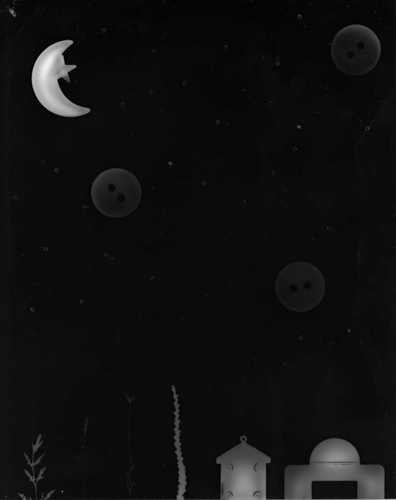
This was a great week of discovery and exploration into three centuries of photography. Next week is the Advanced Digital Photography teen camp, and in two weeks we have the Advanced Darkroom Photography teen camp.
This is what happens when nine artists receive flashlights in a dark room with cameras to record their movements. This is Painting with Light at Art Intersection.
Today, everyone created 5 to 6 images and took home an 8×10 print of their favorite image. It was a fun day in a dark room with nine young artists!
It is not difficult to paint with light at home. All you need is a digital camera, tripod, and a flashlight in a dark room or on the garage door at night.

